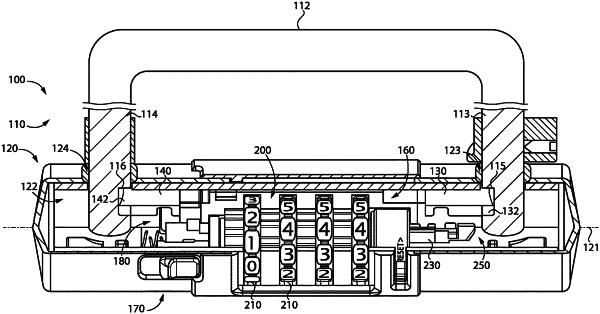| CPC E05B 37/025 (2013.01) [E05B 37/10 (2013.01); E05B 67/063 (2013.01)] | 25 Claims |

|
1. A portable lock apparatus, comprising:
a shackle including a first foot and a second foot;
a crossbar including a first opening operable to receive the first foot and a second opening operable to receive the second foot;
a first bolt movably mounted in the crossbar for movement between a first locking position in which the first bolt is operable to engage the first foot, and a first unlocking position in which the first bolt is disengaged from the first foot;
a second bolt movably mounted in the crossbar for movement between a second locking position in which the second bolt is operable to engage the second foot, and a second unlocking position in which second bolt is disengaged from the second foot, wherein the second bolt is engaged with the first bolt such that the second bolt moves between the second locking position and the second unlocking position in response to movement of the first bolt between the first locking position and the first unlocking position; and
a trigger movably mounted in the crossbar for movement between an engagement position in which the trigger maintains the first bolt in the first unlocking position, and a disengagement position in which the first bolt is operable to move to the first locking position; and
wherein insertion of the first foot into the first opening drives the trigger to the disengagement position, thereby permitting the first bolt to move to the first locking position for engagement with the first foot, and thereby permitting the second bolt to move to the second locking position for engagement with the second foot.
|